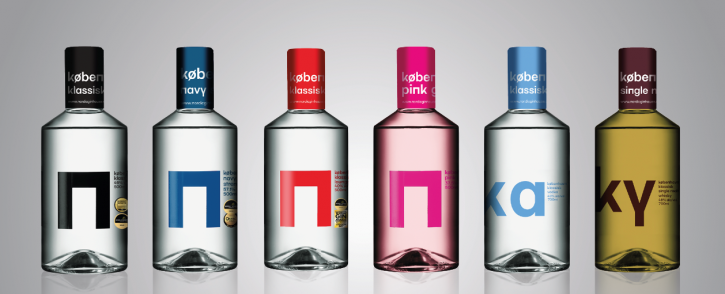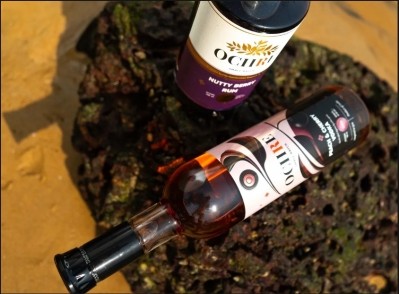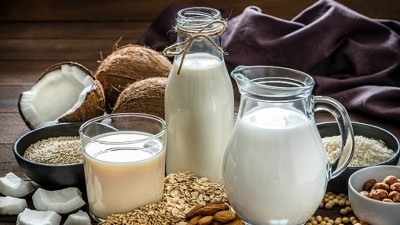Classic with a twist: Scandi-inspired traditional liquors by Nordic Gin House finding favour in Asia

The brand's products are currently available in South Korea, Cambodia, Myanmar and Singapore, in high-end bars, speciality shops, select supermarkets and e-commerce sites Amazon and Lazada.
Next on its interest list are Malaysia, Indonesia, Vietnam and India. Generally, it is targeting regions that are made up of millennial populations who are willing and able to spend on alcohol.
However, while many brands are seeking to innovate with an array of flavours for curious consumers, Denmark-based Nordic Gin House says it stays committed to the classics, but adds a touch of Scandinavia in its creations.
“Consumers are curious, even more so today. They’re always wanting to try new things. They get excited about a new exotic flavour, but at the end of the day, they tend to fall back on the classics, which will remain a reference point for them in terms of judging what tastes good or bad,” said Jakob Vallentin, founder of Nordic Gin House, who has a different take on the innovation trend.
“Everybody is trying to add a twist to alcohol with ginseng and whatever else is trending at the moment. But I don’t see the need to make a flavoured alcohol when you can just blend it on your own. If you want, say, a fruity flavour, you can get mango or strawberry juice and then blend it with my liquor,” said Vallentin as he explained why he is using classics to build brand identity.
The distillery leaves such creative customisations to consumers and finds more value in enhancing traditional classics with distinct Scandinavian elements, such as through the more pronounced use of juniper berries.
“Our gin probably has the highest amount of juniper, the classic gin ingredient. At more than 300 g per litre, that’s a tremendous amount of concentration compared to some other brands,” said Vallentin.
Danish hints of pine and liquorice are also added in all their products, which Vallentin said are the unique flavours in the distillery’s range.
Other Nordic features can be found in the Klassisk Pink Gin, which includes rosehip and is distilled with grapefruit peel instead of lemon peel.
Its gins belong to the classic segment called London Dry Gin. There are specific ingredient amounts that should be followed as a minimum. Certain ingredients may be added or replaced, but as a general rule, distillers cannot scrimp on certain ingredients, but more may be added.
Premiumisation trend
Vallentin also observed that today’s consumers are attracted to premium alcohols, a segment that Nordic Gin House is targeting.
“The younger generation is much more critical of what they eat and drink. If something doesn’t taste good, out it goes. To recruit a new generation of consumers, it is crucial for us to stick with the classics and do it well. We want to be that brand that makes people go, this is how Nordic gin, vodka or whiskey should taste like. At the same time, we want consumers to feel that ours is a brand that you feel safe and comfortable with because we do the classics,” said Vallentin.
For example, what sets its Klassisk Vodka apart is the use of clear spring water during distillation, which Vallentin described as “distilling with Nordic distinction”.
In addition, winter wheat instead of conventional wheat is used. The wheat is planted sometime in August, grows throughout the winter months, and is only harvested a year later after summer.
“The long winters and bright summers give the wheat a powerful flavour. This gives a remarkably crisp, clean taste to our vodkas,” said Vallentin.
Similarly, the whiskey range has all the classic elements, but Vallentin said it has some “Scandinavian magic”. Good quality Nordic sweetwater is used during distillation, which imparts a smooth mouthfeel.
The brand’s philosophy is embodied in their packaging choice – a minimalistic bottle design inspired by those found in traditional Scandinavian pharmacies from long ago. Not only does this reflect its Nordic roots, it is also representative of the clean, premium ingredients used in their products.
Based on its commitment to using 100 percent natural ingredients that are sourced within Scandinavia, Nordic Gin House wants to position itself as an affordable luxury brand.
“There’s a shift from standard to premium among the consumers because they can taste the difference in quality. With increasing spending power in Asia, more are willing to spend on something that is good, especially when you want to invite guests to your home,” said Vallentin, who has observed growth in the premium sector in various regions.
“The mainstream products are more or less stable, maybe 1 or 2 percent up in sales. But if you look at the trends for high end whiskey and vodka, the growth rate is higher although the segment is definitely smaller in terms of volume. This is something interesting in Asia. With more spending power, people will get more curious to try new things because now they can do so,” said Vallentin.
Expansion plans
The firm remains selective about the regions it is expanding to, mainly because it is concerned with not being able to keep up with market demands.
“We may be active in China, but at this point we’re not putting our whiskey there, because I don’t think we can meet the demand. A vodka takes about six to eight weeks to produce, but a bottle of whiskey takes at least three years,” said Vallentin.
The distillery is also planning to launch rum with sweet sap from Scandinavian birch in 2025, and aquavit with dill in September this year.











